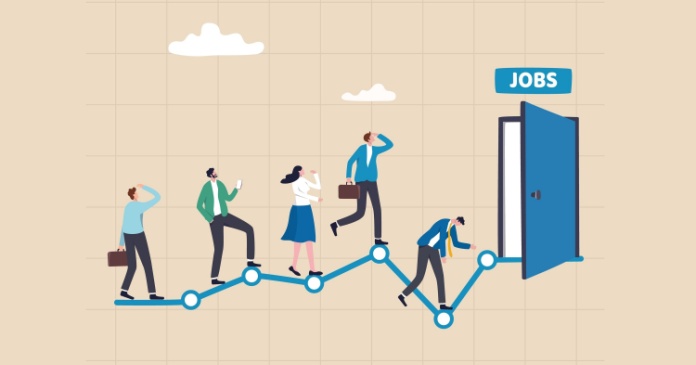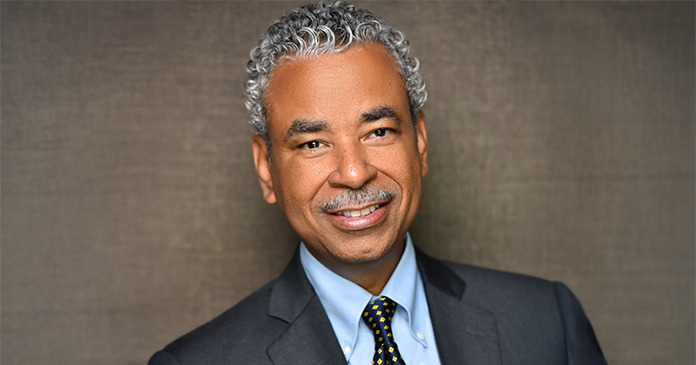Conventional wisdom says that great leaders are those who speak out, give orders, make plans and dominant. They are the outgoing ones. But that’s not always the case, according to new research on leadership and group dynamics that challenge the assumption that the most effective leaders are extroverts.
In fact, introverted leaders can be more effective than extroverts in certain circumstances. The determining factor is who leaders are managing, according to Wharton management professor Adam Grant and coauthors Francesca Gino of Harvard Business School and David Hofmann of the University of North Carolina’s Kenan-Flagler Business School. Their research, forthcoming in the Academy of Management Journal, is titled “Reversing the Extroverted Leadership Advantage: The Role of Employee Proactivity.”
Extroverted leadership involves commanding the center of attention: being outgoing, assertive, bold, talkative and dominant. This offers the advantages of providing a clear authority structure and direction. However, pairing extroverted leaders with employees who take initiative and speak out can lead to friction, while pairing the same group of employees with an introverted leader can be a pathway to success. This has implications for leaders and managers at all levels who want to improve their own leadership styles.
“If you look at existing leadership research, extroversion stands out as the most consistent and robust predictor of who becomes a leader and who is rated an effective leader,” Grant says. “But I thought it incomplete. It tells us little about the situations in which introverted leaders can be more effective than extroverted leaders.”
He and his fellow researchers began looking at the issue through the lens of a business that could easily track productivity and team effectiveness—pizza delivery franchises.
“We wanted to study an organization where we could actually see differences in performance, and where people were generally doing the same work,” Grant notes. “If there is variation in franchise profitability, as a function of who leads and who your employees are, then that would be a very powerful statement about the true impact of a leader on a group.”
Threatened by proactivity
The researchers obtained data from a national pizza delivery company. They sent questionnaires to 130 stores and received complete responses from 57; the responses included 57 store leaders and 374 employees. To adjust for differences in location that were beyond the leaders’ influence, the researchers also controlled for the average price of pizza orders and worker hours. Leaders were asked to rate their own extroversion—the degree to which they commanded the center of attention by acting talkative, assertive, outgoing and dominant. Employees were asked to rate levels of proactive behavior in the store, such as improving procedures, correcting faulty practices, speaking up with ideas and stating opinions about work issues.
What Grant and his colleagues found was a simple inverse relationship: When employees are proactive, introverted managers lead them to earn higher profits. When employees are not proactive, extroverted managers lead them to higher profits. “These proactive behaviors are especially important in a dynamic and uncertain economy, but because extroverted leaders like to be the center of attention, they tend to be threatened by employee proactivity,” Grant notes. “Introverted leaders, on the other hand, are more likely to listen carefully to suggestions and support employees’ efforts to be proactive.”
Pairing an extroverted leader with a proactive team, he says, can hurt, not just hinder, the company’s effectiveness. “Once the extroverted leader responds in a less receptive way, that becomes discouraging for employees and makes them less willing to work hard,” Grant states. “It may also make them less willing to share ideas in the future, which would limit creativity and innovation.”
In fact, the personality conflicts can lead to a power struggle within an organization, openly pitting leaders against employees. This is especially true in companies or groups with a flat hierarchy—for example, if the leaders were recently promoted from the peer level, or if a new leader’s competence and skills are not yet established. Such situations would “be much more likely to lead employees to challenge, and leaders to feel threatened,” a situation known as “status uncertainty,” according to Grant.
“If you are leading a pizza franchise, you are often doing this as your full-time job, and you might be managing high school and college students who have a different set of aspirations and, in some cases, might actually look down upon you as the leader,” Grant points out. At that point, an employee with a better idea for how to get orders processed efficiently on Super Bowl night, or a suggestion for a new coupon or special deal, could make extroverted leaders feel like their “status is being threatened.” They might say, ‘I’m supposed to be in charge here. Let me reassert my authority.’
Whereas the introverted leader, with less of a concern for position, status and power—and a willingness to spend more time listening and less time talking—is likely to quietly process the ideas that come up. That leader is worrying less about the ego or image implications of employees taking charge and introducing ideas.”
The T-shirt challenge
The research team conducted another study that looked specifically at extroverted leadership behavior, not just self-reported traits. They took 163 college students from a university in the Southeastern U.S. and designated them as team members and leaders in a T-shirt folding group. The aim was to fold as many shirts as possible in 10 minutes, with iPods as a reward for the top performers.
Some students were randomly assigned to lead in either an extroverted or introverted manner. The extroverted leaders were given examples of famous leaders who were bold, talkative and assertive, such as Martin Luther King, Jr. and Jack Welch. The introverted leaders were given examples of famous leaders who were quiet and reserved, such as Mahatma Gandhi and Abraham Lincoln. Both groups were then asked to reflect on a time when they led effectively in a similar manner. Meanwhile, two other graduate students, or “confederates,” were paired with each group and secretly told to act either passively or proactively, with proactive confederates offering a new, efficient away to fold T-shirts.
The researchers found a significant interaction between extroverted leadership and proactive behavior that meshed with the findings from the pizza study. When the confederates were passive, teams performed better when led in an extroverted manner, but when the confederates were proactive, teams performed better when led in an introverted manner. “When the confederates were proactive, participants perceived the more extroverted leaders as less receptive to ideas, and they invested less effort in the task,” the researchers write.
The implications of the power struggle for the leader-employee relationship and labor relations became very clear, according to Grant. “At some level, the power struggle is finished, with the leader asserting authority and the employees saying, ‘We’re not going to work as hard on your behalf.'” The employees basically decided that “Hey, these leaders are not receptive to good ideas. We don’t really have a ton of respect for the leader. We don’t want this leader to be one of the top performers. We want to feel, at the end of the day, like our ideas are valued and our contributions are appreciated.”
Interestingly, neither the introverted leaders nor the extroverted leaders showed higher productivity or profitability than the other. The difference, Grant and his researchers found, was in the pairing of leaders and employees.
“It shows that introverted and extroverted leadership styles can be equally effective, but with different groups of employees,” he says. “As a social scientist, this is appealing—people in organizations are sufficiently complex that you can rarely ever conclude that one style is always more effective than another. Our research provides insight into when each style is effective, as opposed to trying to test which one is better—which I think is the wrong question.”
Given these conclusions, why does the popular view persist that extroverts are better leaders across the board? Several possible reasons: One is that extroverts are often perceived as more effective because of a “halo effect.” “This may occur because extroverted leaders match the prototypes of charismatic leaders that dominate both Western and Eastern cultures and are especially prevalent in business,” they write. One online survey of 1,500 senior leaders earning at least six-figure salaries found that 65 percent actually saw introversion as a negative quality in terms of leadership.
Creating space for employees
Grant says the study has broad implications for corporate leaders who want to examine their own leadership styles as well as make changes in the lower management ranks. “We tend to assume that we need to be extremely enthusiastic, outgoing and assertive, and we try to bring employees on board with a lot of excitement, a clear vision and direction,” Grant says, “but there is real value in a leader being more reserved, quieter, in some cases silent, in order to create space for employees to enter the dialogue.”
He worked with the CEO of one Fortune 500 company who has a policy of silence for the first 15 minutes of meetings. He does not utter a single word, although he is an extrovert. “He feels that he has a tendency, once he gets excited about ideas, to run with them to the point where, at times, it leaves employees feeling like they weren’t included,” Grant says. “So he tries to combat that: ‘I want you guys to tell me whatever you’re thinking about—suggestions, feedback, questions—and the floor is yours.’ He listens quietly and takes notes.”
There are also lessons to be learned about giving employees authority and autonomy to make decisions on their own—”providing them with choice about what work they do, as well as how, when and where they complete it,” Grant notes. “One of the strongest predictors of proactivity is a sense of responsibility for the larger team or department or organization. When employees feel like they are responsible for a larger unit, they are more likely to broaden their roles beyond their specific individual job descriptions.”
How can managers actually implement lessons from the study? Grant suggests that once prospective team members have the required skills and expertise, leaders can explicitly look at personality in making the final selection—examining both the employees and the managers, figuring out which teams will work best together. “When I have extroverted leaders, if I have the opportunity I tend to invite in some of the less proactive employees who I think are more likely to want a clear, dominant vision from a leader and who are also more likely to get energized, to step a little bit out of their comfort zones.”
And how do you identify those employees who might fit better with an introverted leader at the helm? By looking and listening, Grant says. “Proactive employees, by definition, spend more of their time and energy taking initiative—whether that’s in terms of generating ideas, coming up with a new work process, staying late to help their colleagues or even going out of their way to seek feedback. You develop a reputation pretty quickly for that set of tendencies.”
Extroverted leaders also need to be careful to delegate responsibility to proactive employees. Grant suggests putting such workers in areas where they have ideas for moving forward or want to take on larger responsibility. These leaders also should actively solicit feedback, positive and negative, and listen to it. Some companies employ 360-degree feedback surveys, but those can be harder to use in small groups. “Asking for advice from employees on how to change can kill two birds with one stone,” Grant says. “It allows the leader to actually learn, and it creates opportunities for employees to contribute right there and then.”
Author: Knowledge@Wharton













